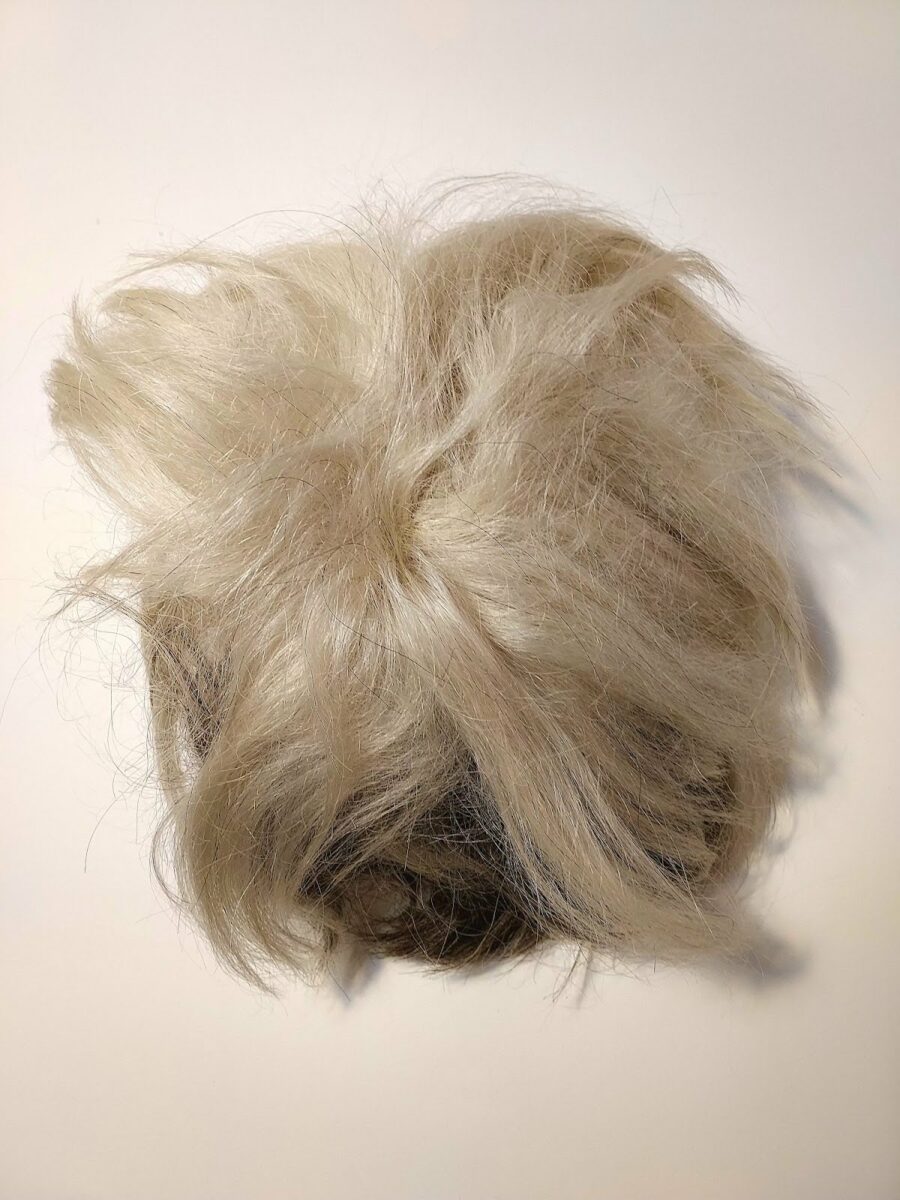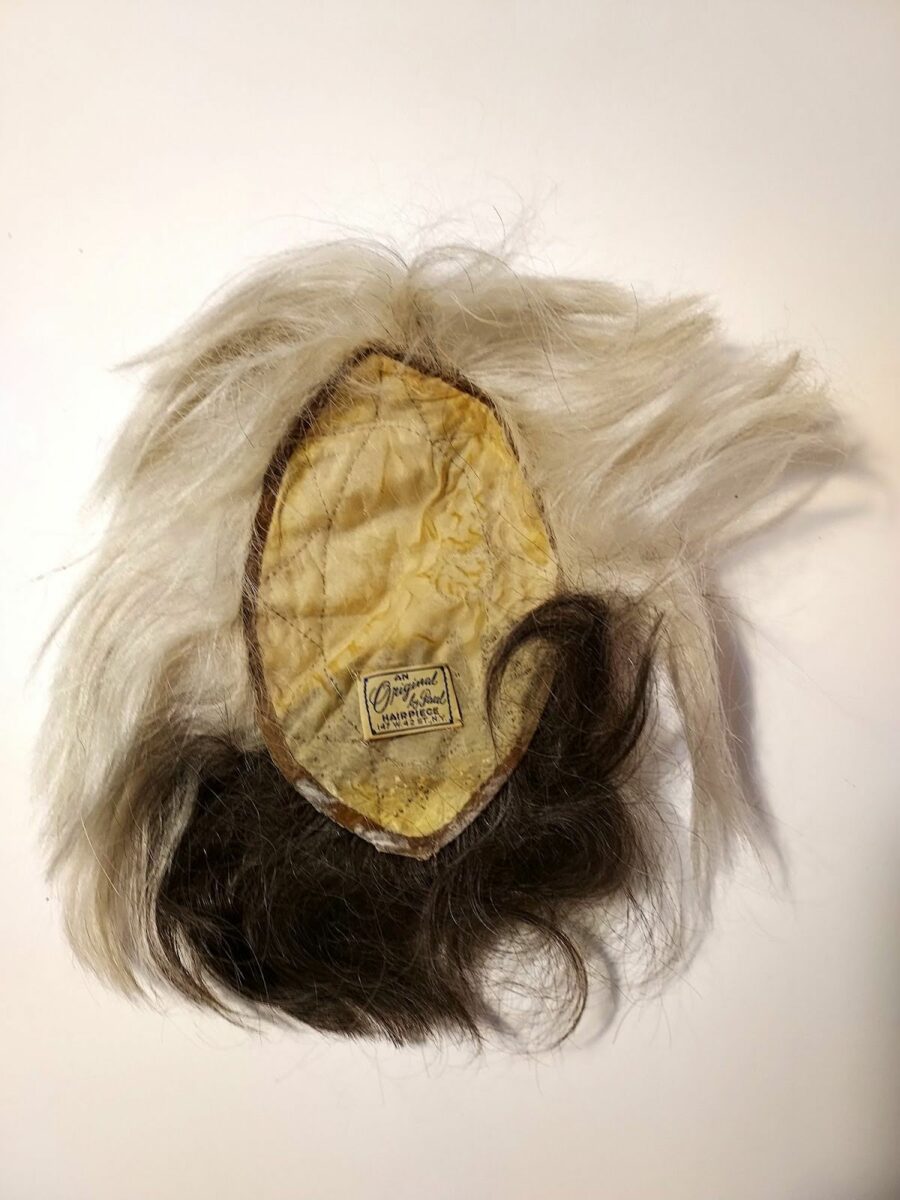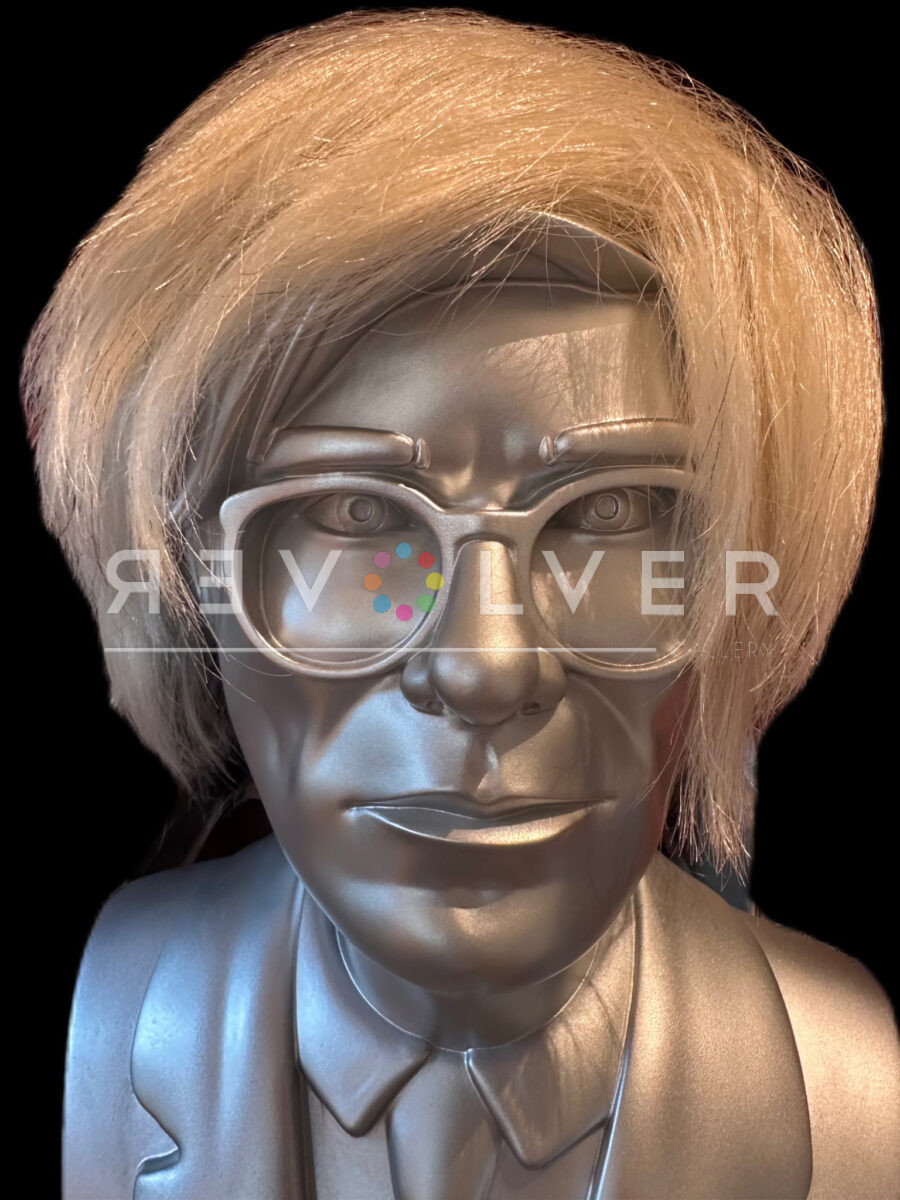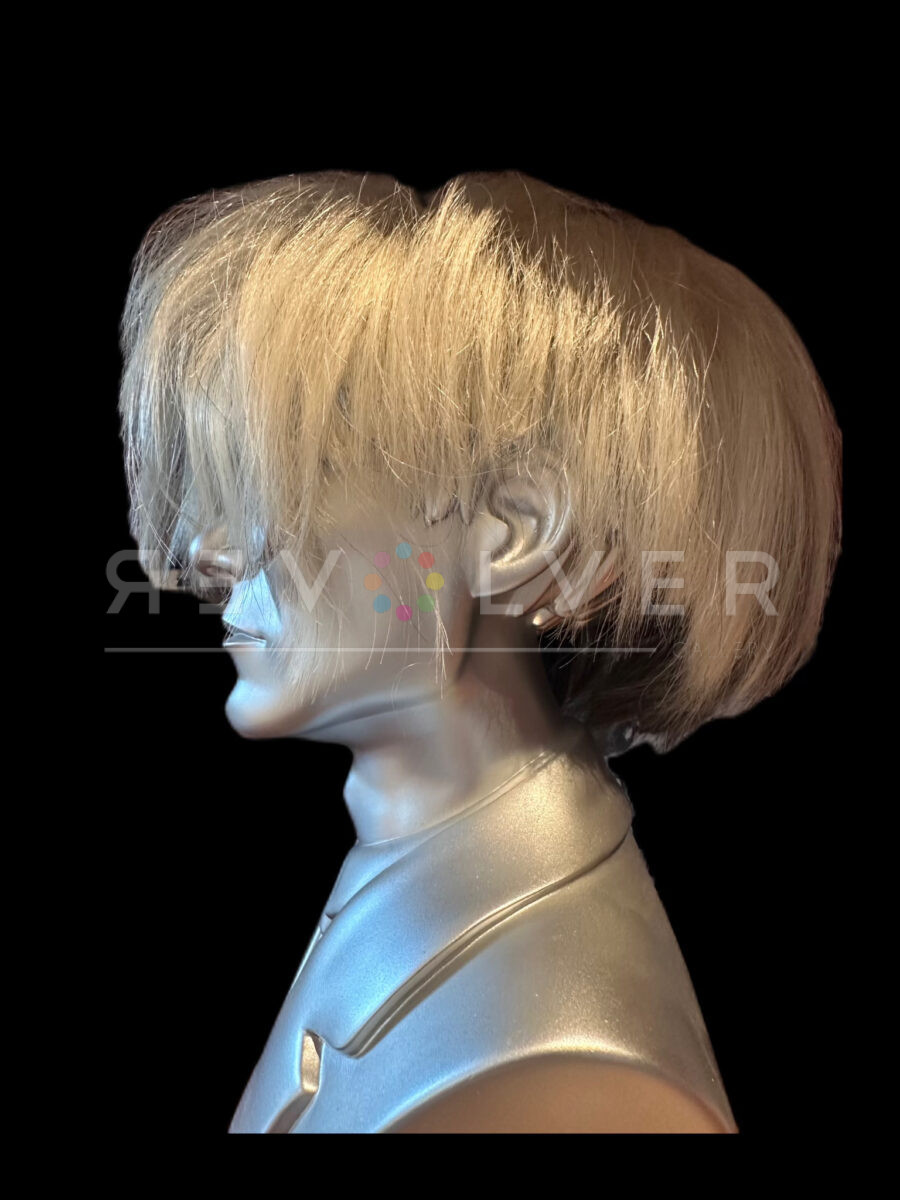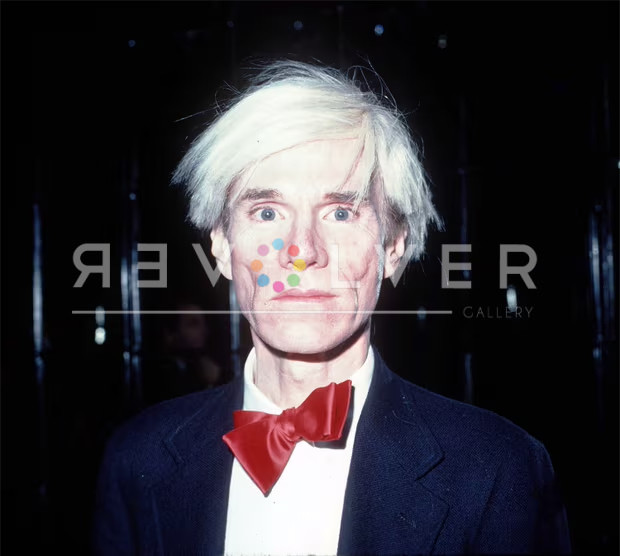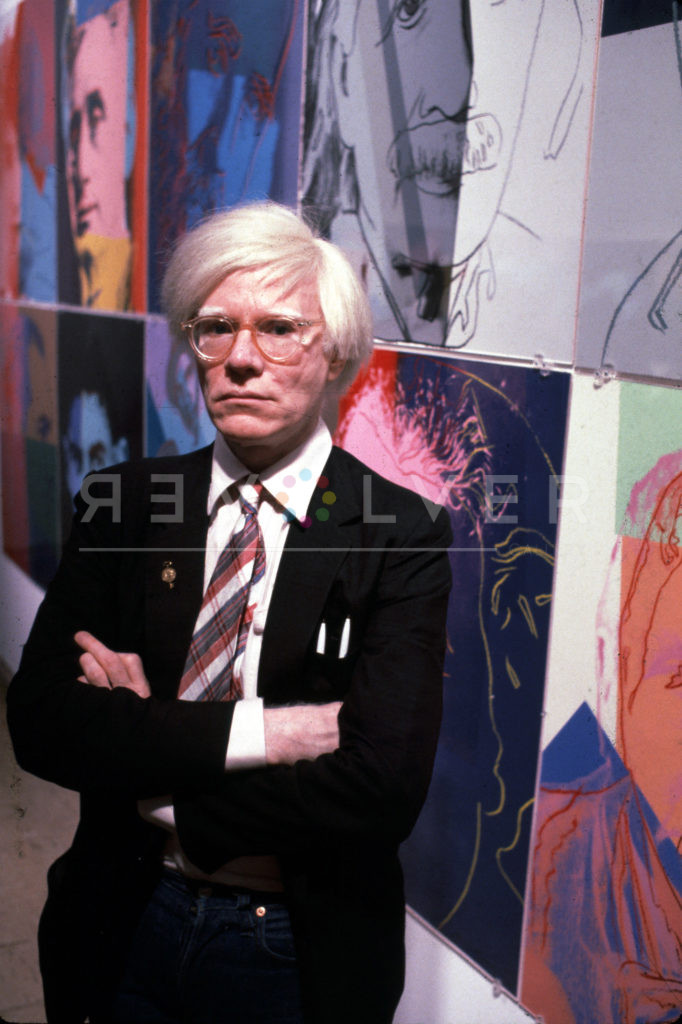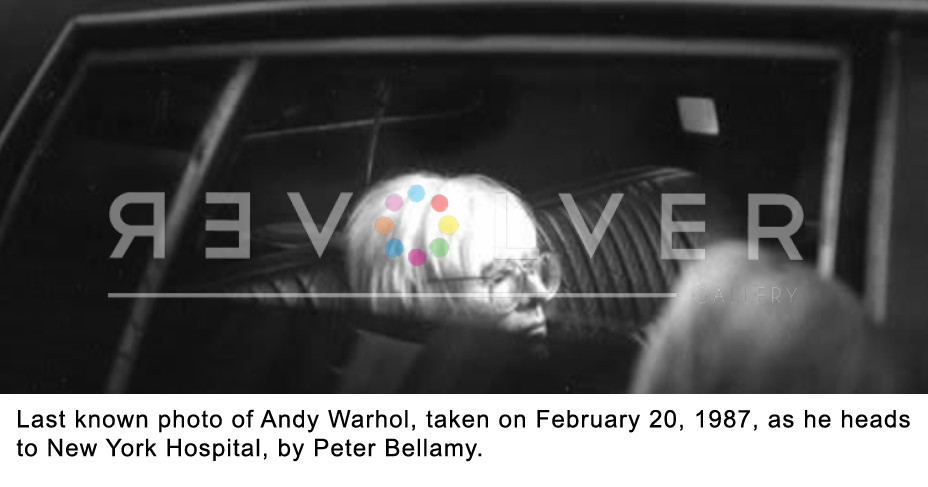Andy Warhol’s “Death Wig,” the last wig he wore before he passed, is emblematic of the artist’s final years, and weaves a story of fame, identity, and an artist’s contemplation of mortality. It was one of his most glamorous and meticulously styled hairpieces, offering a rare glimpse into the man behind the iconic persona, delicately balancing his public image with his private truth.
For Warhol, the boundary between art and self was intriguingly blurred. His artistic expression extended beyond the canvas, manifesting intimately in his most personal medium, which was neither silkscreened nor brushed with saturated colors. Rather, it lay closer to the skin—a series of ever-evolving wigs, transitioning from blonde to silver—becoming integral to his enigmatic persona.
Initially borne out of dissatisfaction with his looks, Warhol compensated for the premature balding that ran in his family by concealing it, but over time his hairpieces became a vital tool in his workshop of ceaseless self-reinvention. Much like his art, they were both a mask and a statement; a protective layer and a medium of expression.
Warhol epitomized his multifaceted identity through his series of wigs. As artifacts, the wigs offer us a tangible connection to the artist who famously declared his love for the superficial, yet whose art consistently delved into the depths of mass cultural mythology and reflected upon commodified images.
In the wake of Andy Warhol’s passing in 1987, his executors uncovered a trove of personal artifacts, among which were hundreds of his wigs. Stored in boxes and paper envelopes, these wigs bore the marks of their use—the smell of sweat and the stains of glue—tangible remnants of Warhol’s daily life. Their discovery not only shed light on Warhol’s meticulous curation of his image but also underscored the personal value these items held for him.
Warhol’s silver wig has evolved beyond the confines of the art world, emerging as a cultural symbol frequently seen in popular Halloween costumes. This evolution from a personal accessory to an iconic emblem captures the public’s intrigue with Warhol, epitomizing the artist’s unique mystique and eccentricity. On the screen and stage, actors like Crispin Glover, David Bowie, Guy Pearce, Bill Hader and Paul Bettany have transformed into Warhol, themselves bearing little physical resemblance to the artist. Yet, donning the quintessential silver wig, they embody Warhol’s persona, illustrating the power and recognition of this simple yet significant artifact.
The afterlife of Warhol’s wigs is a testament to his lasting legacy. These hairpieces, once part of his daily routine, have become artifacts of immense value and interest, offering a chance to contemplate the complex interplay of Warhol’s public image, private life, and artistic practice. Somehow, the silver wig is so synonymous with the artist that putting one on invites its wearer to be a living avatar of Andy. They continue to captivate the imagination, inviting us to explore the many layers of one of the 20th century’s most influential artists.
The “Death Wig” at Revolver Gallery
Now, one of these artifacts lives at Revolver Gallery. It’s a poignant piece of Warhol’s legacy; a silent witness to the enduring influence of an artist who redefined the boundaries between personal identity and artistic expression. From the early years of self-doubt and his active engagement with self-improvement ads, to the iconic Silver Factory era, his wig styles mirrored and then became synonymous with his artistic identity. Once Warhol was firmly established as an art world icon, he used his wigs as armor, consolidating his image, navigating fame and personal trials with resilience and flair. With the haunting “Fright Wig” self-portraits, Warhol’s hairpieces proved to be more than adornment, but integral to his persona and artistry. The afterlife of Warhol’s wigs, from their posthumous discovery to their revered status in auctions, exhibitions and popular culture, further cements their significance in understanding the enigmatic artist.
At Revolver Gallery, the acquisition of Warhol’s last wig–the “Death Wig”–is not merely an addition to our collection; it’s a continuation of the narrative that Warhol himself crafted so meticulously throughout his life. This wig, a symbol of Warhol’s final chapter, invites viewers to reflect on the fragility and profundity of an artist who was as much a creator of his own mythos as he was of his art.
Photo credits:
A bewigged Andy Warhol at Studio 54 in New York City, October 1981. Photograph: Robin Platzer/Twin/Getty
The American artist and filmmaker Andy Warhol with his paintings on December 15, 1980. (Photo by Susan Greenwood / Liaison Agency)
Last known photo of Andy Warhol, taken on February 20, 1987, as he heads to New York Hospital, by Peter Bellamy.

